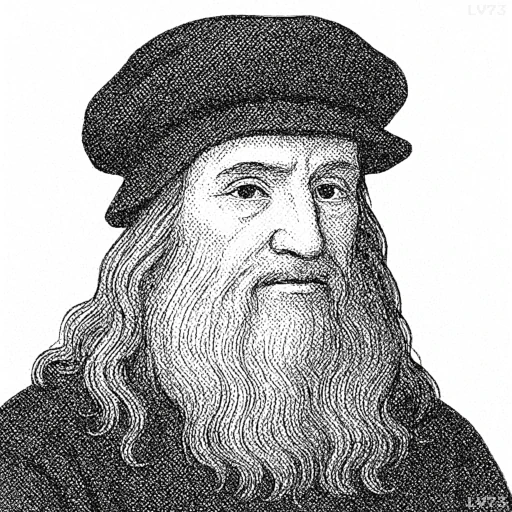“I have found that, in the composition of the human body as compared with the bodies of animals, the organs of sense are duller and coarser. Thus, it is composed of less ingenious instruments, and of spaces less capacious for receiving the faculties of sense.”

- April 15, 1452 – May 2, 1519
- Italian
- A versatile man (painter, sculptor, architect, inventor, scientist, etc.)
table of contents
Quote
“I have found that, in the composition of the human body as compared with the bodies of animals, the organs of sense are duller and coarser. Thus, it is composed of less ingenious instruments, and of spaces less capacious for receiving the faculties of sense.”
Explanation
In this quote, Leonardo da Vinci reflects on the human body in comparison to the bodies of animals, noting that humans have less refined sensory organs. The organs of sense—such as the eyes, ears, and nose—are, in his view, duller and coarser than those of many animals, which have more acute abilities to perceive the world around them. Da Vinci implies that humans, in their physical composition, are not as well-equipped as animals to experience the world with the same precision and sensitivity. The spaces and structures in the human body that house sensory organs are also less capacious, meaning they are less efficient at receiving sensory information.
Historically, this observation comes from Da Vinci’s anatomical studies, where he meticulously dissected human and animal bodies to better understand their function. During the Renaissance, the study of human anatomy was still in its infancy, and Da Vinci’s work in this area, often ahead of his time, sought to uncover the mysteries of both the structure and function of the body. His observation here highlights the contrast between human beings and other animals, which he believed had superior sensory abilities, such as the sharp vision of birds or the keen sense of smell in dogs.
In modern terms, Da Vinci’s observation can be applied to the ongoing study of human and animal physiology. While humans may not have the same level of sensory acuity as some animals, we compensate for this with the development of cognitive and technological abilities. Our senses, though less sharp, are enhanced by our ability to reason, innovate, and adapt. For instance, modern technology such as microscopes, telescopes, and hearing aids has allowed us to expand and augment our sensory capabilities beyond what nature has given us. Da Vinci’s insight serves as a reminder of both the limitations and the remarkable potential of the human body in its pursuit of knowledge and understanding.
Would you like to share your impressions or related stories about this quote in the comments section?



